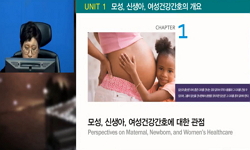Purpose: The aim of this study was to evaluate bolus transit during esophageal swallow (ES) and gastroesophageal reflux (GER) events and to investigate the relationship between the characteristics of ES and GER events in a pop-ulation of term and pret...
http://chineseinput.net/에서 pinyin(병음)방식으로 중국어를 변환할 수 있습니다.
변환된 중국어를 복사하여 사용하시면 됩니다.
- 中文 을 입력하시려면 zhongwen을 입력하시고 space를누르시면됩니다.
- 北京 을 입력하시려면 beijing을 입력하시고 space를 누르시면 됩니다.


Esophageal Bolus Transit in Newborns with Gastroesophageal Reflux Disease Symptoms: A Multichannel Intraluminal Impedance Study
한글로보기https://www.riss.kr/link?id=A103864075
-
저자
Francesco Cresi (S.Anna-Regina Margherita Children’s Hospital) ; Stefania Alfonsina Liguori (Maria Vittoria Hospital) ; Elena Maggiora (S.Anna-Regina Margherita Children’s Hospital) ; Emanuela Locatelli (S.Anna-Regina Margherita Children’s Hospital) ; Flavia Indrio (University of BariPoliclinico) ; Enrico Bertino (S.Anna-Regina Margherita Children’s Hospital) ; Alessandra Coscia (S.Anna-Regina Margherita Children’s Hospital)
- 발행기관
- 학술지명
- 권호사항
-
발행연도
2015
-
작성언어
English
- 주제어
-
등재정보
KCI등재,SCOPUS,ESCI
-
자료형태
학술저널
- 발행기관 URL
-
수록면
238-245(8쪽)
-
KCI 피인용횟수
0
- 제공처
- 소장기관
-
0
상세조회 -
0
다운로드
부가정보
다국어 초록 (Multilingual Abstract)
Purpose: The aim of this study was to evaluate bolus transit during esophageal swallow (ES) and gastroesophageal reflux (GER) events and to investigate the relationship between the characteristics of ES and GER events in a pop-ulation of term and preterm newborns with symptoms of gastroesophageal reflux disease (GERD). Methods: The study population consisted of term and preterm newborns referred to combined multichannel intra-luminal impedance (MII) and pH monitoring for GERD symptoms. The frequency and characteristics of ES and GER events were assessed by two independent investigators. Statistical significance was set at p<0.05. Results: Fifty-four newborns (23 preterm) were included in the analyses. Median bolus head advancing time cor-rected for esophageal length (BHATc) was shorter during mealtime than during the postprandial period (median, interquartile range): 0.20 (0.15-0.29) s/cm vs. 0.47 (0.39-0.64) s/cm, p<0.001. Median bolus presence time (BPT) was prolonged during mealtime: 4.71(3.49-6.27) s vs. 2.66 (1.82-3.73) s, p<0.001. Higher BHATc (p=0.03) and prolonged BPT (p<0.001) were observed in preterm newborns during the postprandial period. A significant positive correlation between BHATc and bolus clearance time was also observed (ρ=0.33, p=0.016).Conclusion: The analysis of ES and GER events at the same time by MII provides useful information to better under-stand the physiopathology of GERD. In particular, the analysis of BHATc during the postprandial period could help clinicians identify newborns with prolonged esophageal clearance time due to impaired esophageal motility, which could allow for more accurate recommendations regarding further tests and treatment.
참고문헌 (Reference)
1 Clayton SB, "Viscous impedance is an important indicator of abnormal esophageal motility" 25 : 563-e455, 2013
2 López-Alonso M, "Twenty-four-hour esophageal impedance-pH monitoring in healthy preterm neonates: rate and characteristics of acid, weakly acidic, and weakly alkaline gastroesophageal reflux" 118 : e299-308, 2006
3 Gupta A, "The relationship between somatic growth and in vivo esophageal segmental and sphincteric growth in human neonates" 43 : 35-41, 2006
4 Hila A, "Swallow evaluation during multichannel intraluminal impedance and pH: an alternate method to assess esophageal transit" 45 : 862-866, 2011
5 van Wijk MP, "Small volumes of feed can trigger transient lower esophageal sphincter relaxation and gastroesophageal reflux in the right lateral position in infants" 156 : 744-748, 2010
6 van Wijk MP, "Role of the multichannel intraluminal impedance technique in infants and children" 48 : 2-12, 2009
7 Cresi F, "Prognostic values of multichannel intraluminal impedance and pH monitoring in newborns with symptoms of gastroesophageal reflux disease" 162 : 770-775, 2013
8 Goyal RK, "Physiology of normal esophageal motility" 42 : 610-619, 2008
9 Tutuian R, "Multichannel intraluminal impedance in esophageal function testing and gastroesophageal reflux monitoring" 37 : 206-215, 2003
10 Omari TI, "Mechanisms of gastro-oesophageal reflux in preterm and term infants with reflux disease" 51 : 475-479, 2002
1 Clayton SB, "Viscous impedance is an important indicator of abnormal esophageal motility" 25 : 563-e455, 2013
2 López-Alonso M, "Twenty-four-hour esophageal impedance-pH monitoring in healthy preterm neonates: rate and characteristics of acid, weakly acidic, and weakly alkaline gastroesophageal reflux" 118 : e299-308, 2006
3 Gupta A, "The relationship between somatic growth and in vivo esophageal segmental and sphincteric growth in human neonates" 43 : 35-41, 2006
4 Hila A, "Swallow evaluation during multichannel intraluminal impedance and pH: an alternate method to assess esophageal transit" 45 : 862-866, 2011
5 van Wijk MP, "Small volumes of feed can trigger transient lower esophageal sphincter relaxation and gastroesophageal reflux in the right lateral position in infants" 156 : 744-748, 2010
6 van Wijk MP, "Role of the multichannel intraluminal impedance technique in infants and children" 48 : 2-12, 2009
7 Cresi F, "Prognostic values of multichannel intraluminal impedance and pH monitoring in newborns with symptoms of gastroesophageal reflux disease" 162 : 770-775, 2013
8 Goyal RK, "Physiology of normal esophageal motility" 42 : 610-619, 2008
9 Tutuian R, "Multichannel intraluminal impedance in esophageal function testing and gastroesophageal reflux monitoring" 37 : 206-215, 2003
10 Omari TI, "Mechanisms of gastro-oesophageal reflux in preterm and term infants with reflux disease" 51 : 475-479, 2002
11 Wenzl TG, "Intraluminal impedance: an ideal technique for evaluation of pediatric gastroesophageal reflux disease" 2 : 259-264, 2000
12 Rudolph CD, "Guidelines for evaluation and treatment of gastroesophageal reflux in infants and children: recommendations of the North American Society for Pediatric Gastroenterology and Nutrition" 32 (32): S1-31, 2001
13 Di Pace MR, "Evaluation of esophageal motility using multichannel intraluminal impedance in healthy children and children with gastroesophageal reflux" 52 : 26-30, 2011
14 Chitkara DK, "Esophageal motor activity in children with gastro-esophageal reflux disease and esophagitis" 40 : 70-75, 2005
15 Holloway RH, "Esophageal body motor response to reflux events: secondary peristalsis" 108 (108): 20S-26S, 2000
16 Jadcherla SR, "Esophageal body and upper esophageal sphincter motor responses to esophageal provocation during maturation in preterm newborns" 143 : 31-38, 2003
17 Omari TI, "Esophageal body and lower esophageal sphincter function in healthy premature infants" 109 : 1757-1764, 1995
18 Gupta A, "Effect of postnatal maturation on the mechanisms of esophageal propulsion in preterm human neonates: primary and secondary peristalsis" 104 : 411-419, 2009
19 Loots C, "Effect of lateral positioning on gastroesophageal reflux (GER) and underlying mechanisms in GER disease (GERD) patients and healthy controls" 25 : 222-229, 2013
20 van Wijk MP, "Effect of body position changes on postprandial gastroesophageal reflux and gastric emptying in the healthy premature neonate" 151 : 585-590, 2007
21 Vandenplas Y, "Diagnosis and treatment of gastro-oesophageal reflux disease in infants and children" 15 : 593-603, 2000
22 Staiano A, "Development of esophageal peristalsis in preterm and term neonates" 132 : 1718-1725, 2007
23 Peter CS, "Detection of small bolus volumes using multiple intraluminal impedance in preterm infants" 36 : 381-384, 2003
24 Francavilla R, "Comparison of esophageal pH and multichannel intraluminal impedance testing in pediatric patients with suspected gastroesophageal reflux" 50 : 154-160, 2010
25 Frieling T, "Comparison between intraluminal multiple electric impedance measurement and manometry in the human oesophagus" 8 : 45-50, 1996
26 Corvaglia L, "Combined oesophageal impedance-pH monitoring in preterm newborn: comparison of two options for layout analysis" 21 : 1027-e81, 2009
27 Tutuian R, "Clarification of the esophageal function defect in patients with manometric ineffective esophageal motility: studies using combined impedance-manometry" 2 : 230-236, 2004
28 Lang IM, "Brain stem control of the phases of swallowing" 24 : 333-348, 2009
29 Imam H, "Bolus transit patterns in healthy subjects: a study using simultaneous impedance monitoring, videoesophagram, and esophageal manometry" 288 : G1000-1006, 2005
30 Omari TI, "Assessment of intraluminal impedance for the detection of pharyngeal bolus flow during swallowing in healthy adults" 290 : G183-188, 2006
동일학술지(권/호) 다른 논문
-
Cyclic Vomiting Syndrome: A Functional Disorder
- The Korean Society of Pediatric Gastroenterology
- Kaul, Ajay
- 2015
- KCI등재,SCOPUS,ESCI
-
Maladaptive Behavior and Gastrointestinal Disorders in Children with Autism Spectrum Disorder
- The Korean Society of Pediatric Gastroenterology
- Pusponegoro, Hardiono D.
- 2015
- KCI등재,SCOPUS,ESCI
-
- The Korean Society of Pediatric Gastroenterology
- Cresi, Francesco
- 2015
- KCI등재,SCOPUS,ESCI
-
Heterotopic Pancreas Presented as Duodenal Tumor with Obstruction
- The Korean Society of Pediatric Gastroenterology
- Kim, Sung Heun
- 2015
- KCI등재,SCOPUS,ESCI
분석정보
인용정보 인용지수 설명보기
학술지 이력
| 연월일 | 이력구분 | 이력상세 | 등재구분 |
|---|---|---|---|
| 2023 | 평가예정 | 해외DB학술지평가 신청대상 (해외등재 학술지 평가) | |
| 2020-01-01 | 평가 | 등재학술지 유지 (해외등재 학술지 평가) |  |
| 2013-01-01 | 평가 | 등재학술지 유지 (등재유지) |  |
| 2012-04-03 | 학술지명변경 | 한글명 : 대한소아소화기영양학회지 -> Pediatric Gastroenterology, Hepatology & Nutrition외국어명 : Korean J Pediatr Gastroenterol Nutr -> Pediatric Gastroenterology, Hepatology & Nutrition |  |
| 2010-01-01 | 평가 | 등재학술지 유지 (등재유지) |  |
| 2007-07-06 | 학회명변경 | 영문명 : The Korean Society Of Pediatric Gastroenterology And Nutrition -> The Korean Society of Pediatric Gastroenterology, Hepatology and Nutrition |  |
| 2007-01-01 | 평가 | 등재학술지 선정 (등재후보2차) |  |
| 2006-06-27 | 학술지명변경 | 외국어명 : 미등록 -> Korean J Pediatr Gastroenterol Nutr |  |
| 2006-01-01 | 평가 | 등재후보 1차 PASS (등재후보1차) |  |
| 2005-05-30 | 학술지등록 | 한글명 : 대한소아소화기영양학회지외국어명 : 미등록 |  |
| 2005-01-01 | 평가 | 등재후보 1차 FAIL (등재후보1차) |  |
| 2003-07-01 | 평가 | 등재후보학술지 선정 (신규평가) |  |
학술지 인용정보
| 기준연도 | WOS-KCI 통합IF(2년) | KCIF(2년) | KCIF(3년) |
|---|---|---|---|
| 2016 | 0.07 | 0.07 | 0.09 |
| KCIF(4년) | KCIF(5년) | 중심성지수(3년) | 즉시성지수 |
| 0.09 | 0.1 | 0.367 | 0.03 |




 KCI
KCI




